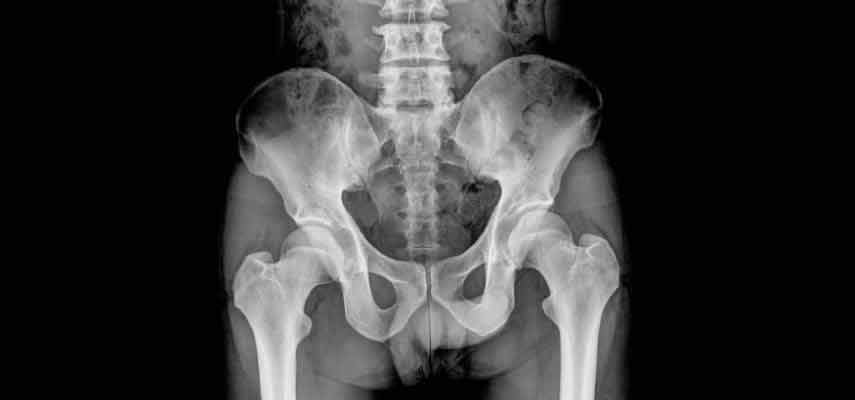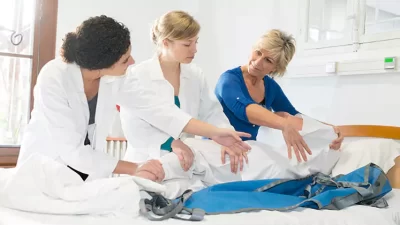Introduction
Leg pain and back pain are the most common issues that can happen to people of any age and gender. Sometimes, it will be due to minor issues such as muscle spasms, sprain or overuse of joints. But sometimes, the cause would be much serious.
One such condition is Sacroiliac joint dysfunction. Because back pain is associated with many other spinal conditions, there are still ambiguities around providing scientific proof on the condition and the symptoms.
What is Sacroiliac Joint (SIJ)?
The role of the sacroiliac joint is to manage the upper body weight to legs and hip. It is the joint between the ilium and sacrum bones in the pelvis that is connected to strong ligaments. Sacroiliac joints are paired C-shaped or L shaped, strong and a weight transferal synovial plane joint.
There are two sacroiliac joints in the human body, one on the right and one on the left. The size of these two varies from person to person.
What causes Sacroiliac Joint Dysfunction?

Dysfunction of Sacroiliac joint[1] or commonly called as SI joints can happen to anyone irrespective of age or health condition. The most common symptom is pain in the lower back and legs.
According to studies, 15 – 30% of the lower back pain is caused by sacroiliac joint dysfunction. This condition is also called Sacroiliities.
It is the inflammation of one or both of the joints. Lower back pain is the most common symptom of this condition along with pain in the thighs and buttock.
This condition can be caused due to an injury, exerting sudden heavy pressure on the joint or even strain. In some cases, SIJ can happen due to degeneration of sacroiliac joints as well. It can also happen when you fall down or active in sports and games.
Regular jogging, especially without proper posture and technique can also cause SIJ dysfunction.
Another cause of SIJ dysfunction is arthritis. There are many types of arthritis targeting various joints in the body.
One such arthritis named as ankylosing spondylitis[2] mainly attacks and damages the SI joint. The symptoms are pain starting from neck till lower back and a rigid spine. It can also result in a stooped-over posture.
SIJ dysfunction is mostly diagnosed in women. Pregnancy is one of the common causes of SIJ dysfunction and mostly happens to young and middle-aged women. The reason for this being the widening of their pelvises during pregnancy.
In some cases, SIJ disorders can happen along with other spinal issues such as osteoarthritis and herniated disc.

What are its Signs and Symptoms?
The following are the signs that indicates that you may have sacroiliac joint dysfunction
- Unilateral lower back pain
- Mild to medium pain around the PSIS region (posterior superior iliac spine)
- Intense pain while doing activities such as getting up after sitting for a while, climbing the staircase, running, sleeping etc.
- Occasional bilateral pain
- Pain in the hip, groin, and thighs in case of severe SIJ condition
- Stiffness and pain in the lower back and increases in intensity after sitting or walking for a long time
- Difficulties during sexual intercourse
- Reduced pain when you lie down.
Read Also – Overview of The Unilateral Joint Pain
How to Diagnose?
The following are collected by the medical practitioners to diagnose any SIJ issues if associated symptoms are experienced by the patient.
- Comprehensive patient history
- Imaging tests
- Clinical studies and results
This is to understand the activity level of a patient, how long has he/she been involved in physical activities, what type of activities, any past injuries that can potentially cause SIJ issues etc. After all the details are collected various medical tests are conducted for accurate diagnosis
There are many reasons for lower back pain. Hence, a differential diagnostic approach is needed to diagnose the actual cause of back pain in order to provide the right treatment. A person with back pain can experience the symptoms due to problems in the spine, hip or the SI joint. Therefore all these 3 areas should be considered and examined to identify the exact source of pain.
Physical examinations like palpation[3] and tests such as FABER (Flexion, Abduction, External Rotation) also known as Patrick’s test[4] is used to identify any asymmetry and evaluate pathology of the sacroiliac joint and hip joint.
Image studies such as MRI scans and CT scans will also be utilized to identify the root cause of the problem. Another method is using a diagnostic jab in the joints to understand SIJ dysfunction.
You may also like to read: Move Free Advanced Review – Is This Product Safe To Use?
How to Treat Sacroiliac Joint ?

Following are the treatments for Sacroiliac joint dysfunctions. The method will vary depending on the severity of the condition, age and the overall health condition of the patient.
- Physiotherapy, including stretching, low-impact aerobics and strengthening under the supervision of a physiotherapist or a trained specialist. Here[5] are some of the exercises to do and avoid.
- Proper rest with minimal activities. Any sudden movement that directly impacts the back should be avoided on all costs
- Applying Ice is another effective treatment. Compressors can be placed on the affected area for 20 minutes and can be repeated 2-3 times a day for optimum benefits. On an important note, ice should be placed on top of another layer of thick cloth or using a compressor and not directly on the skin
- Just like ice, heating pad can also help to relieve the symptoms, and help to reduce muscle stiffness and relax
- Gentle massage of the lower back, buttocks and thigh is an effective remedy. It will relieve pain and other symptoms but may not guarantee full recovery
- Medication is another remedy if symptoms persist. Usually the medicines would be available over the counter. But consuming it can cause serious side-effects and health issues, especially for people with kidney issues, hypertension and ulcer. So doctor’s prescription is always advised
- In rare cases, doctors may recommend surgery if the pain does not subside
Read Next – Everything You Need To Know About Ankylosing Spondylitis
Conclusion
Home remedies and proper rest can effectively treat SIJ dysfunction. However, if you experience a sudden elevated pain and discomfort, unexpected fever, tingling like sensation at the lower back or hip or weakness in the leg and thighs, it is time to seek immediate professional help.
Feature Image – Shutterstock.com
In – post Image – Shutterstock.com & Pinterest







 This article changed my life!
This article changed my life! This article was informative.
This article was informative. I have a medical question.
I have a medical question.
 This article contains incorrect information.
This article contains incorrect information. This article doesn’t have the information I’m looking for.
This article doesn’t have the information I’m looking for.